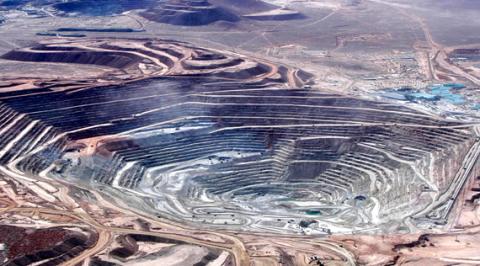Are Electric Vehicles Really Saving the Environment?

In today’s society, consumers want to feel good about their purchases and a lot of thought goes into them. It goes beyond how it will benefit them and branches out into how it could benefit others. You will find “clean,” “green,” and “responsibly sourced” products in many arenas because protecting the environment has become more popular. Electric vehicles are exactly that; another alternative in car buying that reduces emissions. But... have we really asked ourselves if it is as good as we think it is? The claims sound legitimate, and it is a fact that driving an EV has less negative effects on the environment compared to combustion engines.
But let’s rewind a bit. What happens before the car is assembled?
With the EV boom happening, more and more nickel is being demanded. Nickel demand is expected to increase from 5% to 59%. Because of this, more methods of extracting are being used that come with a higher cost and increased health risks. Electric vehicle batteries are made with raw materials that have to be mined such as nickel, cobalt, lithium, graphite, etc. Most commonly, the metals come from places like Australia, Indonesia, Canada, Russia and the Philippines.
A popular material for making EV batteries, lithium, might be harder to get than we think. Of the 136 lithium battery plants, 101 of them are in China. The U.S. is in a position where they have to fight to get their hands on this material. Both countries are looking for new sources and alternatives to support the EV boom. China has had its hands in this market for much longer than the US has, so it might not be the easiest feat.
The last thing we need is a new materials shortage in the auto industry; therefore, investing in the sourcing of these materials “locally” may provide the security needed for years to come. There are plans to create a closed supply chain loop within the US. Lithium has been located in some western provinces of Canada. Additionally, GM has announced that it will invest in lithium mining in Imperial, California, a city in the desert of the southeast part of the state, near the Mexican border. The goal would be to build vehicle manufacturing sites nearby to prevent transporting materials, reducing the carbon footprint, in theory.
But the major problem is that extracting these materials from the earth creates dangerous environmental issues, which is what EV is supposed to prevent, right? Lithium and other metal mining requires a huge amount of water, almost 500,000 gallons per metric ton of lithium, in places where water is scarce. Whatever water is left is contaminated from the pollution created through the mining process. The mining industry is the highest risk industry for water stress in places where water supply is already almost non-existent. We should also mention air pollution. Can you imagine what these miners are breathing?
After the air and water has been polluted from mining the metals, the production of the battery can commence, adding to the problem. The production of electric batteries contributes to a sizable amount of greenhouse gas emissions, more than ICEs. Building these requires a lot of energy, and the more battery cells needed for cars means more carbon is produced. When you build an EV, you are doubling the amount of global warming and energy used in comparison to gasoline ran vehicles. Damage has been done to produce the “green” car.
How much is that really helping? We are trading tailpipe emissions for substantial and long-term negative effects to our environment, just in a different way.
When we think of electric vehicles, we think “clean, safe, and environmentally friendly,” but there is much more to it below the surface. These batteries have to be recharged, and wouldn’t you know it, most electricity being used to charge them is created by burning fossil fuels. To make it a truly clean and green experience we need all charging stations to be powered by renewable energy.
There is ‘hush hush’ when it comes to what these batteries are actually made of. Manufacturers using nickel to make their EVs are slick about what they disclose. They have tried to ease the blow by saying the material is recyclable but won’t give the public any actual details. On the flipside, Tesla has made it known that they’ve signed a deal with BHP, securing a plentiful supply of nickel in Indonesia. They are prepared for the EV ramp up and won’t be caught without enough material.
Truth be told, recycling is almost nonexistent for electric batteries. Barely any lithium batteries are recycled in the US compared to 99% of lead car batteries being recycled. It is more complex and costly to recycle lithium, and that’s why it isn’t being done. A tossed out lithium battery has lifetimes to sit in a landfill and pollute the soil and groundwater around it. If the government and manufacturers really want EV to be sustainable, part of the initial EV investment should be a streamlined process for battery recycling.
There are environmental concerns throughout the entire battery life cycle, from the very beginning in the mines, production, and having nowhere safe to go when it dies. Studies show that nickel-mining is the eighth highest out of 63 metals to be detrimental for global warming, with others mentioned above close by in rank. Are the trade-offs worth it? How long will these material-rich places be able to accommodate the increased demand? Essentially, people are given the facade that they’re driving the cleanest type of vehicle when really, much had to be sacrificed to get there. With more of this research coming to light, hopefully we will see smarter choices for preserving the environment.






